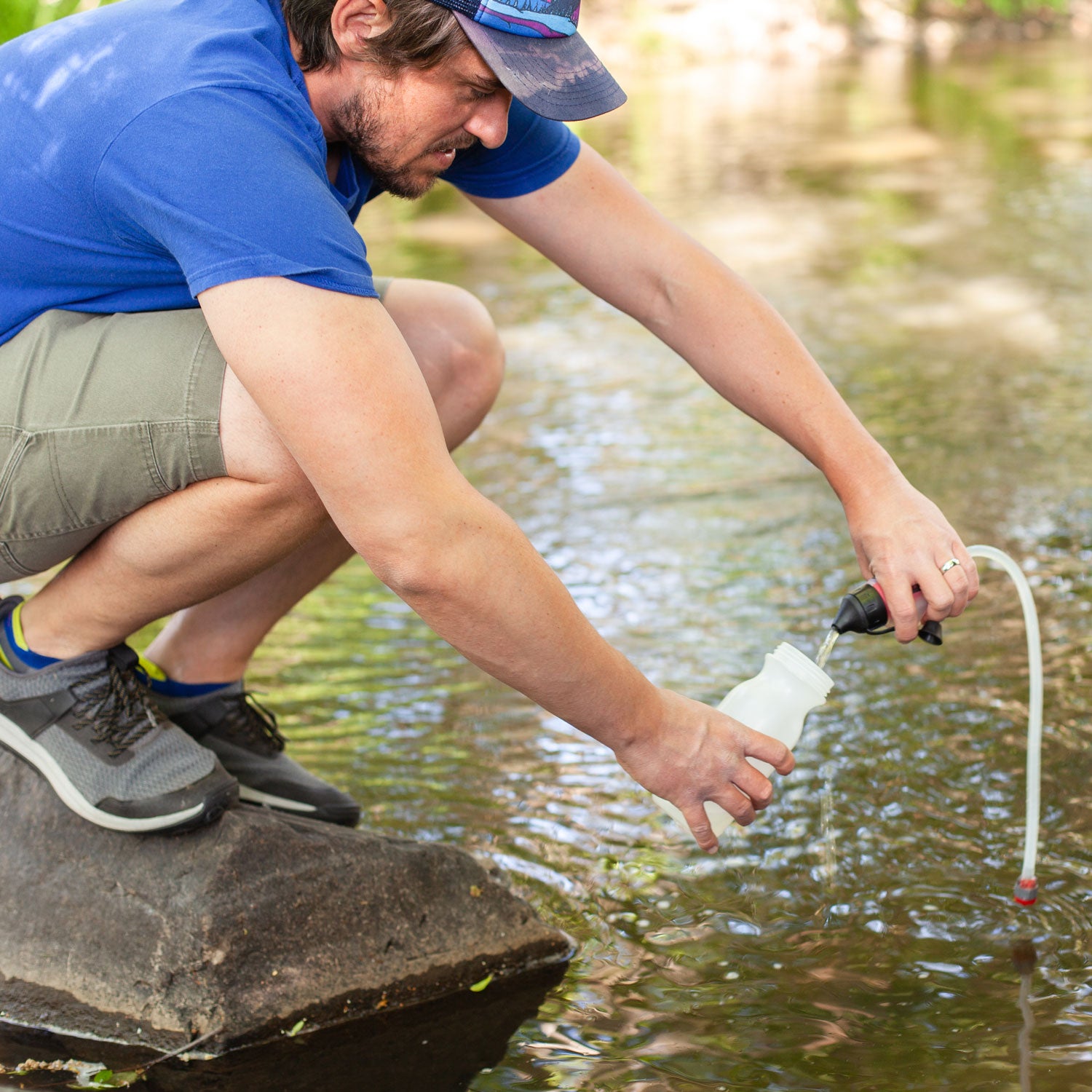There is some serious tech buried in your water filter. A lot goes into safely sifting out protozoa, microplastics, and germs in the backcountry. But with all those complicated parts, it can be hard to determine when your water filter has run its usable course—not something you want to take a chance on lest you come home with a nasty bout of giardia.
To glean tips on how to lengthen the life of your filter and how to know when it’s toast, I spoke with Chris Barchet, the former category director of water purification at MSR and now owner of . I also reached out to Leah Jones and Sarah Evans, marketing manager and customer service rep, respectively, at .
For the purposes of this article, I specifically focused on physical filters that you push water through to purify. Chemical, UV, and absorptive models all purify water as well, but physical filters tend to be the most common.
Lengthen the Life of Your Filter
#1. Look for Clean Water
Clean water is less taxing on your filter, so seek it out whenever possible. “That’s the number one thing you can do to prolong the life of any water treatment device,” Barchet says. Silty and tannic (tea-colored) water are absolute filter killers. You can count on getting between 1,000 and 2,000 liters of clean water out of many filters, but if all you’re filtering is murky sludge, that’ll bring the number down—you could even kill a filter in a single trip that way.
If you’re traveling somewhere like the Boundary Waters, which is famously tannic, think of bringing an extra filter cartridge with you. “Gather water in the middle of a source rather than the shoreline, where it is typically more stirred up,” Evans says. “Allow it to settle if you can.”
#2. Prefilter Your Water
Unless you’re always getting water from pristine alpine lakes and creeks, prefiltering is a good idea. This can be as simple as running your water through a bandana or Buff to stop large chunks of particulates from working their way into the filter. Evans recommends wrapping a coffee filter around the intake to keep as many particles as possible from getting up the intake.
#3. Store It Correctly
Don’t skip this step. Cleaning a filter usually means some minor disassembly so you can boil ceramic models and flush hollow fibers with chlorine. “Bugs can grow in your filter during storage,” Barchet says. “Use a bleach-water solution or some other way to disinfect and flush out the filter,” Evans adds, “then allow everything to air-dry.”
#4. Back Flush
“Regularly back flushing a hollow-fiber filter in the field can triple its life,” Barchet says. That involves reversing the flow of water in the filter so it can clean out large particles and bits of sediment.
#5. Make Sure It’s Sealed
At a minimum, you should inspect the seals, checking if they’re dry or cracked. Even when stored correctly, gaskets can deteriorate when sitting clean and dry in a bin between trips. “Look for cracks and water coming out of places it isn’t supposed to come out of,” Barchet says. “The water has a certain path it’s supposed to go through, and one little break in a seal can mean water can eek its way around an O-ring or crack, and then you’re drinking contaminated water.”
How to Know When It’s Toast
Hollow Fibers
As time goes one, hollow-fiber filters like the ($85) and ($350) will get gummed up and increasingly difficult to pump water through. Most Katadyn filters pump around a liter a minute without too much effort, and while there aren’t specific metrics that will let you know it is near the end of its life, the difficulty of pumping is pretty obvious. “If you’re worried about breaking something because it’s so difficult, it is definitely clogged,” Evans says. “It’s kind of unmistakable.”
Ceramics
Ceramic filters— ($90) and ($95)—have a leg up on hollow fibers in that if they start to gum up, they can be easily cleaned. But over time, scrubbing them out makes the portion that filters water too wide to catch the bugs. Ceramic filters should come with a measuring gauge that you can use to see if the diameter has been scrubbed down to the point where it doesn’t work anymore.


